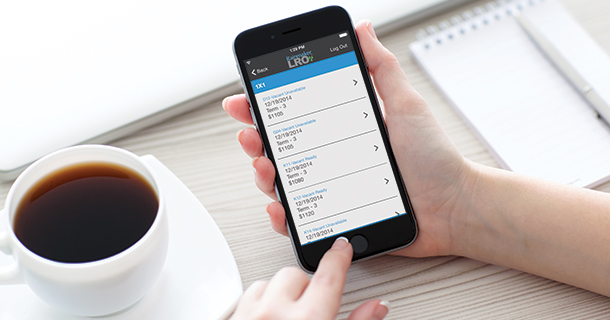According to Donald Davidoff, founder of D2Demand Solutions, a technology consulting firm specializing in the multifamily housing industry, and former Archstone Smith REIT’s group VP of pricing and revenue management, automated revenue management systems are the most impactful use of analytics to ever hit the multifamily industry.
In the early 2000s, apartment REITs led the development and advancement of the systems that strategically and efficiently balance rent increases and occupancy in the same way hotels, airlines and car rental services had been pricing their products for years.
The early multifamily adopters of revenue management systems have had the benefit of time to learn how best to utilize them, establish a balance between using the factory settings for parameters or modifying them to fit their personal business strategies and train staff to work with them efficiently.
Essex Property Trust had the benefit of five years to understand the volatility and frequency of revenue management pricing changes and the impact of competitor pricing on its own portfolio across its various West Coast submarkets before closing the BRE merger in April 2014.
“If you’ve got the data analytics and systems in place to understand those issues you’re well-positioned to outperform your competitors,” said Davidoff, noting that almost all of the NMHC Top 50 use one of the commercially available revenue management systems today.
By completely working through the kinks of RealPage Inc.’s Yieldstar Price Optimizer before rolling out the program across the BRE portfolio, Essex successfully narrowed the gap between the two portfolios in the first year after the merger. “We didn’t expect that, but it’s been great,” said Essex President and CEO Mike Schall in January.
Mobile frontier
Much the same as revenue management revolutionized apartment pricing, mobility is stacking up to be the industry’s next game changer, as mobile business applications experience a growth explosion.
Global mobile devices and connections grew to 7.4 billion last year from 6.9 billion in 2013 and Google recently announced that more mobile searches are happening today than searches from desktop computers.
According to data collected by Cisco Systems, Inc., global mobile data traffic is expected to increase nearly tenfold from last year to 2019, when there likely will be 8.2 billion handheld or personal mobile-ready devices in operation.
“Taking a long look into the future, we believe it is a safe bet to say that most of our customers will become mobile first, to some extent,” said Elian Counts, VP of product strategy for The Rainmaker Group, which recently introduced its new mobile app for multifamily revenue managers, the first and only app of its kind in the apartment industry today.
“We’ve already seen this shift happen in the consumer space and there is no reason to not expect a similar shift in multifamily, although it will move at a slower pace. Already today, emailing, calendar management and other traditionally corporate activities are being driven by mobile usage, rather than a fixed location desktop computer,” he said.
Counts said that downloads using LRO’s new app have been split evenly by device type and have exceeded his company’s original expectations.
“We can’t be more thrilled with our industry’s reception to the availability of LRO Mobile. Considering it is the first application of its kind, it was difficult to gauge what expectations should be. However, through the usage statistics and customer feedback, we are very pleased with the perceived value and ensuing success of the application,” said Counts.
By providing access to all important property metrics required to make daily pricing decisions, from monitoring pricing, occupancy and leasing trends to reviewing competitor information, or even directly modifying pricing, the software enables property revenue managers to stay on top of their community’s performance regardless of their busy schedules.
The mobile app also facilitates site teams, who might be busy focusing on prospects, to leverage the technology and have key info, like new pricing, immediately available. The app will also generate quote sheets that can then be emailed to prospects without having to get behind a desk. A site member can simply take a picture of a view from an apartment unit that a prospect admired, generate a quote and send it to the prospect while touring a property.
“Revenue management is often about taking advantage of opportunities in the market that are short-lived,” said Bryan Hilton, director of revenue management for Denver-based Simpson Property Group.
“Having access to LRO whenever I need it provides me the tools to seize those opportunities. If I can get a call, email or text from one of our community team members, I can react timely and efficiently. I also believe I have been able to exceed expectations and make quick pricing changes when I’ve been contacted by a community at an off hour.”
Hilton says the new interface is easy to use and requires almost no training for those who have had any experience with other mobile applications.
“The acceptance at Simpson was immediate. When I began speaking about the app in a meeting, several members of our team had LRO mobile downloaded and were signing in before I finished my presentation,” said Hilton.
Becky Sanders, Simpson Property Group’s Seattle regional property manager had the opportunity to share the app with her peers in the industry.
“Everyone has been extremely enthusiastic about it. Recently, I was touring a property with a maintenance supervisor and we were discussing why a unit hadn’t moved. He thought it was because of the rent. In a matter of minutes, I was able to pull up the unit-comparable rents and speak to the issue, all while still in the golf cart on the drive over. It’s a fantastic tool and I love it,” she said.
Meanwhile, LRO’s largest competitor, Yieldstar, is touting the use of a different approach to mobility. Yieldstar Price Optimizer allows users to transition from desktop to smartphone to tablet, no matter the browser, without downloading an app, because the software orients and resizes itself to whatever device is being used.
Yieldstar has followed what is becoming a growing trend called Responsive Web Design—a one-size-fits-all approach to orientating or building a website that enables self-optimization across all mobile devices.
Responsive Web Design is explained in a white paper put out by RapidValue, a provider of end-to-end mobility solutions to enterprises worldwide. It is the methodology that recommends the design and implementation of a website that responds to user behavior and environment, based on the screen size, orientation and operating system of their device.
Its drawbacks are that, while it optimizes the user experience across devices, that experience is less rich than that of a mobile web app. Moreover, when users switch from desktop to mobile device to access the website, navigation typically is enabled from top to bottom only, whereas the mobile app is accessible from side to side using the touch screen.
Scrolling from left to right is possible with Responsive Web Design, but requires much more customization in layout and code, thus more time and effort, a longer development cycle and specialized knowledge of the approach.
And, if a website is already built using the normal web approach, rebuilding it using Responsive Web Design in order to optimize across mobile devices will further add to its complexity.
The benefits of a Responsive Web Design over a mobile app are in its long-term maintenance. Costs are lower than that of an app because a single version maintains the website across the wide range of mobile devices with the control and flexibility to make changes in the website alone, while the mobile app requires changes be made separately in both the app and website versions.
But prioritizing the content in Responsive Web Design is essential to ensure that important content is not missed when the user switches from one device to another.
Placement of the navigation menus also plays an important role, especially on more complex desktop websites with multilayer drop-down menus that have to be adapted for smaller screens. Once a hierarchy becomes too complex or different than what you want mobile users to see, the argument for Responsive Web Design becomes less compelling, says RapidValue. They conclude that if a user wants a solution that can be controlled and that’s easy to maintain and makes use of existing skills, Responsive Web Design is the right approach.
But, if you are looking for a high quality, rich user experience, better performance, faster implementation and seamless transactions and left to right navigation, a mobile web app approach is the way to go.
Now that Simpson has gone mobile, there is no going back. The company has designed its website with a focus on being more mobile-friendly for prospects.
“At some of our communities, we offer tablets for prospects to begin a virtual tour of the community while we prepare for their personal tour. The prospects seem receptive and we plan to expand this to more properties. We can do our expense reports and payables on mobile devices and we have begun testing mobile maintenance tools at select properties,” said Hilton.
Davidoff expects the trend towards more mobile engagement in the multifamily industry to continue. “How’s that for a ridiculously easy prediction?” he asks his readers in a blog he writes for the multifamily industry. “What’s interesting to me is not the growth of mobile solutions for prospects and residents—that’s just a ‘have to do,’ but rather some insight suggesting vendors are developing more and more mobile solutions for operational associates. Our regionals and VPs are almost always on the road, so tablet and smart phone functionality will make them much more productive. Expect an explosion of that in 2015,” he wrote.
Meanwhile, Rainmaker is preparing for the mobile future.
“Beyond simply building a mobile application, we are architecting all of our systems and data in such a way that we can ensure we are able to deliver that functionality or data to a user regardless of which method of access they choose to use—web, mobile, mobile web through Responsive Web Design, etc.
“However, it isn’t simply a problem of the right technology. It also requires a mindset shift from designing our software around a person sitting at a computer in their office. We have to take a close look at what usage patterns are driving a mobile user to access our system and then identify how we can maximize their experience because they are mobile, not despite it. This is the true power of mobile,” said Counts.














